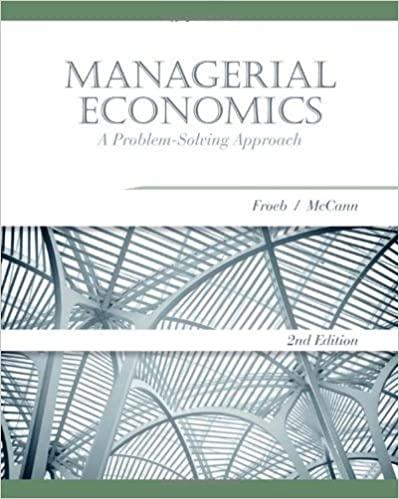Question
Let U be a strictly concave differentiable function. Show that if x>x'>y'>y and: pU(x)+(1p)U(y)=pU(x')+(1p)U(y'), then px+(1p)y>px+(1p)y'. Hint: Start by rearranging the above equality and rewriting
Let U be a strictly concave differentiable function. Show that if x>x'>y'>y and:
pU(x)+(1p)U(y)=pU(x')+(1p)U(y'),
then px+(1p)y>px+(1p)y'.
Hint: Start by rearranging the above equality and rewriting it using the Mean Value Theorem. (Do not ask us what the Mean Value Theorem is. You should have learned it in MATH 157. If you forgot what it is, you can find the statement of the Mean Value Theorem on the internet in a few seconds.)
Note: The above implies that when a risk-averse agent bears more risk (note that outcome pair (x,y) is riskier than outcome pair (x,y)), then to make sure her expected utility stays the same, her expected income must increase. This observation will be useful when we study moral hazard.
Step by Step Solution
There are 3 Steps involved in it
Step: 1

Get Instant Access to Expert-Tailored Solutions
See step-by-step solutions with expert insights and AI powered tools for academic success
Step: 2

Step: 3

Ace Your Homework with AI
Get the answers you need in no time with our AI-driven, step-by-step assistance
Get Started


